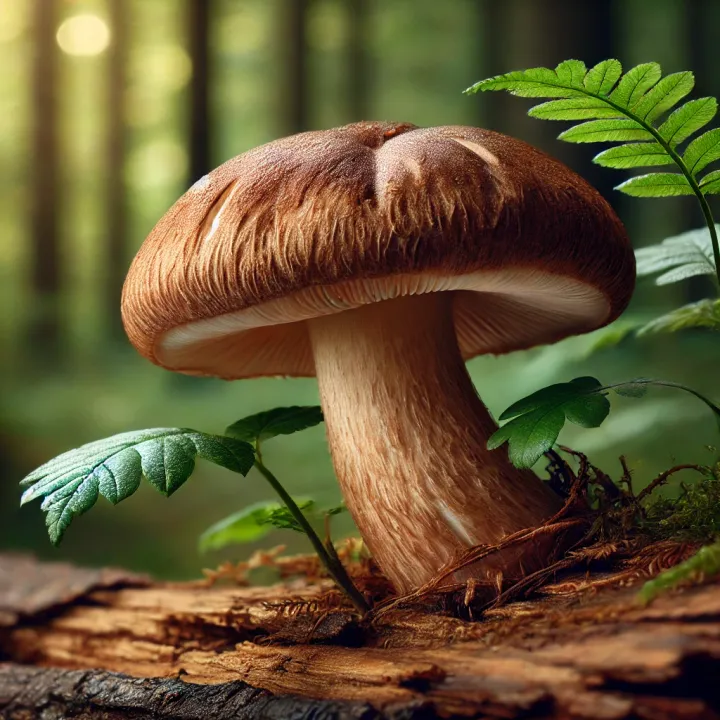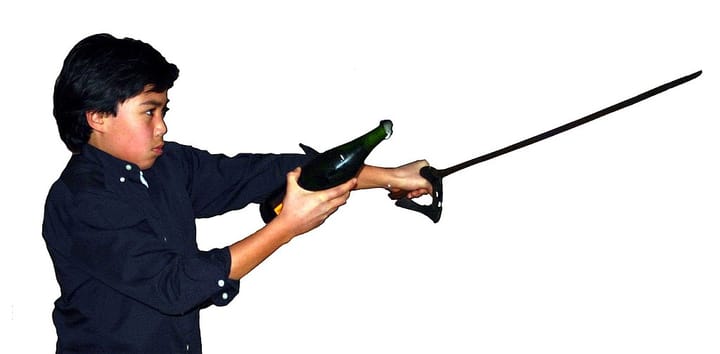Japan's Exquisite Bid: Delving into Auction Culture
In Japan, the tradition of auctioning the first catch or harvest across various markets, including Tokyo's Toyosu Market for seafood, reflects a blend of prosperity and tradition, attracting global attention amidst a festive ambiance.

In Japan, the tradition of auctioning the season's first catch or harvest intertwines with the cultural ethos, especially evident in the bustling seafood markets and tranquil fruit orchards.
The early days of January, a time for family reunions and a break from work, also host the eagerly awaited annual tuna auction at Tokyo's Toyosu Market, typically on January 5th.
This event, widely broadcasted on TV and online, draws eyes from across the globe as bidders place extravagant bids on the year's first tuna, symbolizing prosperity and honoring tradition.
The auction not only resonates with the locals but also captivates aficionados of Japanese cuisine worldwide, reflecting a distinctive meld of commerce, culture, and seafood tradition in Japan.
Note: I excluded Wagyu from the auction discussion as it differs from seafood and fruits, which often see high bids for the season's first catch or harvest due to tradition and perishability.
Wagyu auctions, on the other hand, are driven by consistent demand for high-quality, well-reared beef, with prices reflecting the meat's quality, rarity, and rearing practices rather than a rush for the season's first offerings.
Historical Roots
The culture of auctioning the first catch or first harvest dates back to centuries, intertwined with the Shinto belief of purity and perfection.
The first yield is often seen as the purest form of the season’s bounty, embodying the painstaking craftsmanship and the pristine essence of nature.
Over the years, this tradition evolved into a social event, a celebration of sorts, honoring the relentless efforts of the fishermen and farmers.
The Arenas of Auction
The tradition of auctioning high-quality and often rare edibles is a fascinating aspect of Japanese culture, and it often takes place in various locations across the country, each with its own unique offerings and specialties.
Here are some notable locations where these auctions occur:
Toyosu Market, Tokyo
Taking over from the iconic Tsukiji Market, Tokyo's Toyosu Market is a major hub for seafood and fresh produce auctions, housed on Toyosu island's reclaimed land within Kōtō Ward.
Unique to Toyosu is the green flooring in the tuna auction area, contrasting the white floors elsewhere, aiding buyers in evaluating the tuna's red meat quality for price determination.
As for the auction prices for Tuna and Sea Urchin in Toyosu Market:
Bluefin tuna, known for its rich, unique texture and flavor, is highly prized. Auctioned directly from Japanese docks, it's often served in premium sushi venues. A record was set in 2013 when a 489-pound Bluefin fetched $1.8 million.
This was surpassed in 2019 by a 612-pound Pacific Bluefin at $3 million, roughly $4,900 per pound. By 2023, the opening auction in Japan saw a Bluefin sale of $273,000.
Auction prices for sea urchin (Uni) significantly vary based on quality and type. High-quality Kita Murasaki Uni may fetch up to 10,000¥ ($67) per box (250g) at the market.
Additionally, auction-grade Uni's desirability is showcased by a New York restaurant offering it at a premium price of $90 as an 'Uni Experience' supplement to an Omakase meal.
Miyazaki City in Miyazaki Prefecture
Miyazaki mangoes, known as "Taiyo no Tamago" (Egg of the Sun), are auctioned at a wholesale market in Miyazaki city, Miyazaki Prefecture, southwest Japan.
Notable auctions include instances where pairs of these mangoes fetched between 300,000 yen ($2,495) to a record-tying 500,000 yen (about $3,990) during the year's first auctions held in this city.
Hokkaido
Yubari King melon auctions primarily occur in Hokkaido, with Yubari being a focal point where a pair was auctioned for 5 million yen (roughly $46,500) in 2019.
Besides Yubari, other spots within Hokkaido also host these auctions, like in an instance where a pair fetched 3.5 million yen (about $25,000).
Densuke watermelons are often auctioned in Hokkaido, Japan, particularly at the Sapporo Central Wholesale Market.
Prices vary each season; for instance, a Densuke watermelon was auctioned for over $4,500 in one season, while in recent years, auction prices in Sapporo ranged from around $2,050 to approximately $4,275.
Kanazawa City, Ishikawa Prefecture
Ruby Roman grapes auctions are typically held in Kanazawa, within Ishikawa Prefecture, central Japan, where these high-class grapes are cultivated.
For instance, an auction in Kanazawa saw a bunch of Ruby Roman grapes fetching a record high of 1.5 million yen, approximately US$10,000.
Tambasasayama market, Hyogo Prefecture
Matsutake mushroom auctions in Japan prominently occur in the Tanba-Sasayama region, specifically at the Tambasasayama market in Hyogo Prefecture.
Here are some notable instances reflecting the prices they can fetch at auctions:
In a recent auction on October 11, 2023, three matsutake mushrooms were auctioned off for 930,000 yen, about $6,200
Various Locations Auctions for Crabs
Crab auctions in Japan unfold across different prefectures, each known for auctioning a unique type of crab. As the crab fishing season kicks off in Ishikawa Prefecture, a snow crab was auctioned for a significant $44,000 or 5 million yen, marking the event's highlight.
Similarly, Fukui Prefecture hosts snow crab auctions, with one notable event on November 6, 2021, seeing a snow crab fetch 800,000 yen ($7,050). Tottori Prefecture also joins the crab auctioning scene, where a snow crab reeled in a record bid of 5 million yen, showcasing the region's competitive bidding environment.
Shimonoseki City, Yamaguchi Prefecture
The first Fugu pufferfish auction of 2023 was notably held at Haedomari market in Shimonoseki, located in Yamaguchi Prefecture, where the highest price per kilogram reached $100.
Sembikiya, Tokyo
Sembikiya is Japan's oldest fruit shop and a participant in high-end fruit auctions. It's not an auction venue, but it's a notable name associated with luxury fruit auctions.
Auction Price vs Regular Market Pricing
In Japan, the auction of top-grade food, like seafood, blends tradition with market fervor. The season's first catch, especially revered, can command sky-high auction prices, symbolizing premium quality and a promising season.
This contrasts with regular market days where prices moderate with increased supply.
In a 2019 New Year auction at Tokyo's Toyosu Market, a Bluefin tuna snagged $3 million, underscoring the prestige of nabbing the season's first tuna.
While a single sushi piece from this tuna could fetch $200 to $300 at auction, Mr. Kimura, adhering to tradition, priced it at the regular market price, $3 to $4 per piece to the customers, reflecting the customary allure of the season's initial catch.
On a regular day, a diner at a reputable Tokyo sushi restaurant might pay around $20 to $40 for a premium cut of Bluefin tuna sashimi.
This price, although still reflecting the tuna's luxury status, is more accessible and varies based on the restaurant's location, the tuna's grade, and market conditions, offering a sharp contrast to the initial auction frenzy.
Benefits of Japan's Edibles Auctions
The tradition of auctioning prime edibles in Japan serves multiple purposes and offers various benefits to different stakeholders involved, reflecting a unique interplay of culture, economics, and social prestige. Here are some of the purposes and benefits associated with these auction markets:
Economic Stimulation
- Market Value Determination: Auctions help in determining the market value of premium products based on demand and supply dynamics.
- Revenue Generation: They generate significant revenue for sellers and contribute to the economic vitality of the regions where they are held.
- International Trade: High-profile auctions attract international buyers, promoting cross-border trade and enhancing the global reputation of Japanese agricultural and seafood products.
Cultural Preservation and Promotion
- Tradition Upholding: These auctions uphold long-standing traditions, reinforcing the cultural significance of food and its production in Japan.
- Craftsmanship Recognition: By fetching high prices, auctions recognize and reward the craftsmanship and effort of growers and fishermen.
- Culinary Heritage Showcase: They serve as a platform to showcase Japan's culinary heritage, reinforcing the country’s status as a purveyor of high-quality, exquisite edibles.
Social Prestige and Promotional Opportunities
- Prestige Enhancement: Winning a bid, especially in high-profile auctions, enhances the social prestige of buyers and often receives media coverage, thus promoting individuals or businesses involved.
- Marketing and Branding: Businesses often use these auctions as marketing opportunities. For instance, restaurants or shops that secure premium products through auctions may use this as a branding tool to attract customers.
- Community Engagement: Auctions often become social events that foster community engagement and offer networking opportunities for industry stakeholders.
Consumer Experience Enhancement
- Quality Assurance: The competitive bidding often associated with these auctions underscores the high quality and exclusivity of the products being auctioned, assuring consumers of the premium nature of the items they purchase.
- Culinary Exploration: They provide opportunities for consumers, including both individuals and culinary establishments, to explore and experience the pinnacle of what Japanese agriculture and seafood have to offer.
Educational Value
- Educational Insight: Auctions provide educational insights into the value of food, the intricacies of Japanese agriculture, and the seafood industry, fostering a deeper appreciation for the nation’s edible offerings.
Sustainability and Conservation
- Sustainable Practices Encouragement: The premium prices fetched in auctions can encourage growers and fishermen to adhere to sustainable and high-quality production practices, contributing to conservation efforts.
The Auction Bidding Process
In Japan, auction bidding intertwines tradition and competition, drawing bidders like middlemen and restaurant representatives across various venues.
The process begins with a visual inspection of items, whether it's seafood at Tokyo's Toyosu Market, Yubari King melons in Hokkaido, Ruby Roman grapes in Ishikawa, or Matsutake mushrooms across Japan.
With the auctioneer's initial bell ring, bidding starts from a set price. Bidders, in a fast-paced yet disciplined manner, signal their bids using hand gestures until the highest bid is secured, marked by a final bell ring from the auctioneer.
These auctions, diverse in offerings, uniformly exhibit meticulous inspection, competitive bidding, and an appreciation for culinary excellence, embodying Japan's tradition and value for premium quality edibles.
Conclusion
The Japanese auction culture, weaving tradition with market dynamics, mirrors a quest for perfection across a range of produce. It's more than commerce; it's a tribute to the harmony between nature and craftsmanship.
The New Year's first catch auction at Toyosu Market emphasizes Japan's premium on seafood freshness and quality.
Additionally, special auctions for prized fruits like Yubari King melons or Ruby Roman grapes at different markets underscore the enduring demand and lively trade for quality seafood and produce in Japan.


